February 20, 2022 | The Conversation
February 21, 2022 | YGK News
Sarah Haines is an Assistant Professor who just started teaching with CivMin in January. Before joining U of T, she completed her undergrad, masters and PhD at Ohio State University. We recently connected with her to learn more about her research and why she’s so passionate about what she does.
How do you like teaching at U of T so far?
It’s been great! I’ve really been enjoying interacting with the students, so it’s been great. We started off on Zoom, but now we’re back in person, so it’s great to see people’s faces—even behind a mask.
What’s your research specialty?
My research specialty is indoor air quality and the indoor microbiome(s). I focus on the microbiology aspect of building science and how that impacts human health. Specifically think about mold growth in homes and how mold and moisture can impact upper respiratory systems. Ultimately, I’m working to make those broader connections between air quality and health outcomes in indoor environments.
I’m hoping to establish new techniques and technologies to prevent mold growth in homes and provide ways to make sure that we have new, sustainable materials or that we’re using different methods to prevent these harmful exposures indoors.
One of the interesting tools that I’ve leveraged has been using smartphones as a method to detect different exposures in housing. Theoretically, we could all use an app on our phones to determine exposure or concentrations of microbes or maybe even CO2 concentrations in our homes.
What kind of future research projects are you looking into?
I’m really passionate solving issues in sustainable housing. Often, we see lots of mold growth and moisture issue in these Indigenous communities and it’s truly a systemic problem. I’m really hoping to be working directly with these communities to establish solutions for these potential harmful exposures.
Is there something that pushed you in this direction that you’ve taken with your research and your career?
My grandmother had some upper respiratory issues and it got me thinking about what she might have been exposed to growing up. This got me thinking about the situation in housing communities at socio-economic disadvantage. Now I want to know how we can improve indoor air quality and just housing quality in general.
What’s the coolest project you ever go to be part of?
Analyzing space dust! While doing my masters and PhD research, we were in connection with someone at NASA who wanted to send us some “space dust”. I will admit, initially we were so excited thinking it was going to be from Mars or the moon, but it turned out to be just some dust they vacuumed up at the International Space Station. It was still very cool, but a bit of a letdown! We tested it for different micro biological components of bacteria and fungus, as well as particle size, and provided the results to them.
You grew up and did all your schooling in Ohio before moving to Toronto, correct?
Yes, I grew up in Kirtland, Ohio, a suburb of Cleveland. What I really loved about growing up there, is that we were close to a city, but I was also close to different farms and rural life. I grew up in a very small town where everyone knew everyone and we went to football games on Friday nights. I was even in the marching band.
You play the flute, right?
I started playing in middle school and I was part of the Cleveland Youth Wind Symphony in high school, and I still play today.
What’s your go-to song?
I have the sheet music from the ‘Pride and Prejudice’ movie with Keira Knightley. I really enjoy playing songs from that.
By David Goldberg
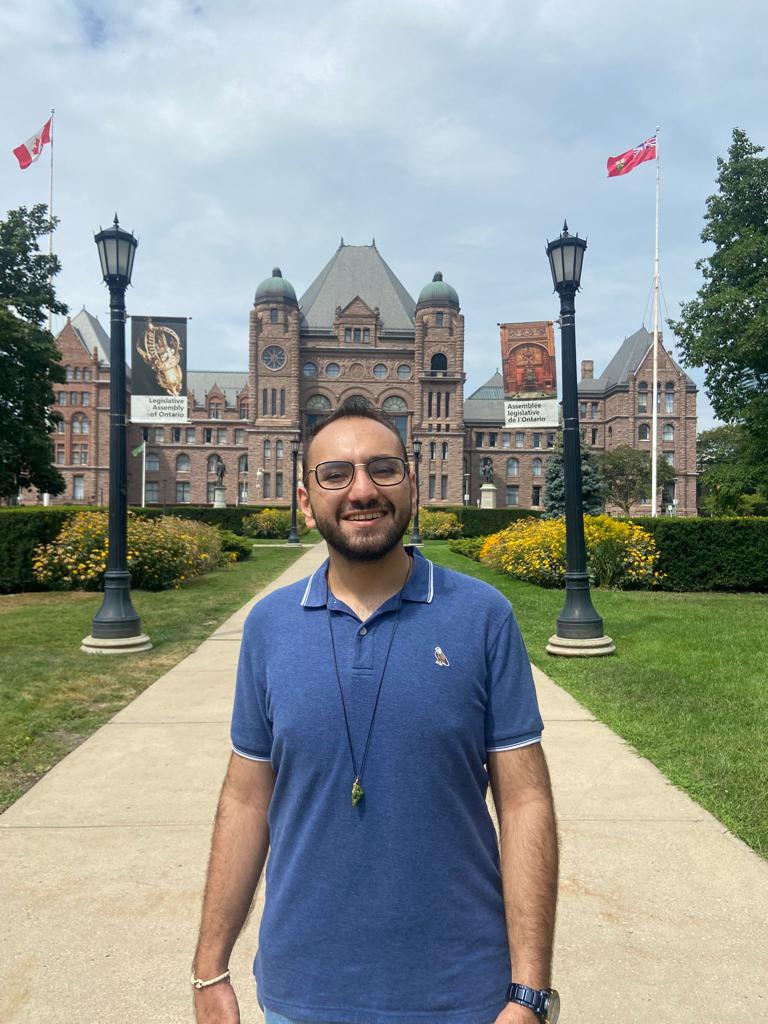
In advance of the coming Graduate Research Days, February 24 & 25, CivMin contacted previous participants to get their point of view on the event and their research goals at U of T. Our Q&A is with PhD candidate Weaam Jaafar.
If you could let us know a little bit about yourself, where you came from, as in what institution, and what attracted you to U of T.
My name is Weaam Jaafar. I am originally from Lebanon, where I attended the American University of Beirut. I got my bachelor’s in chemistry and after that I worked two years in air quality and emissions in Lebanon. I work now with Professor Marianne Hatzopoulou. I saw what she worked on, and it really attracted me to her work, so I applied to U of T.
How did you become aware of Professor Hatzopoulou’s work?
I worked at a professor’s lab before and she recommended me to [Prof. Hatzopoulou], then on the U of T website I saw lots of information about what she does and I became aware of the opportunity.
What are you working on now with Professor Hatzopoulou’s group?
Right now I’m working on a citizen science project where we are working with citizens from the community. We are teaching them how to install air sensors, and compare emission data, so they can actually have the hands-on approach and understand the end result. We’re going to raise awareness towards air pollution to a specific community – around Yonge and Eglinton.
I guess you’ve seen UrbanScanner as well?
Yes, I have. I haven’t tested with it, though I know all about it and have seen it, but I still did not get the chance to use it.
Did you attend the Graduate Research Days (GRD) last year? Was it a positive and reinforcing experience?
Yes, I did. It was really nice, especially as I came from a background that is not related to engineering (chemistry). It was a very nice way for me to get introduced to what people are working on and to have a chat with the professors. It was a really nice experience and, even though we couldn’t do it face-to-face because of COVID, it was a really nice way of doing it virtually.
We had this virtual platform, GatherTown where we created avatars of ourselves, and we used them to go around the hall from room to room. It was so much fun. You could chat one-on-one or within a larger group, as you liked.
It was just one big room, split it into different corners, where every professor had the corner. The administration had their own corner; it was really simple, very nice and quick.
Did you have the chance to meet any of the professors, or students, from U of T prior to that event? Or was [GRD] your first contact?
I did know a student who works with Professor Hatzopoulou. She put me in contact because we’re both from Lebanon and they did guide me through the process a bit with this event. But, other than that, I had no other contact.
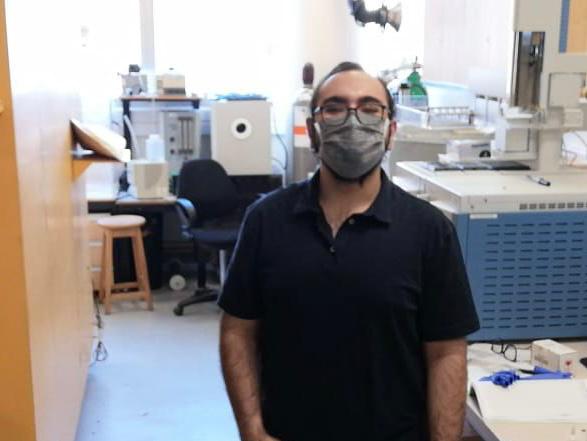
We knew last year there were a few incoming grad students located in Beirut and we were concerned, as there had been a massive explosion there last year. We wondered what’s going on, if everyone was okay, and will people be able to attend, even get online, etc?
The Beirut explosion is a tragedy, a very painful event that affected everyone. The number of innocent people lost, the ones injured, the ones left without a home, the damage of our beautiful city caused suffering beyond comprehension. We are still traumatized by it, and I believe that Aug. 4 has left us with a deep scar that is difficult to heal. It was a really rough time. But it was eye opening on a professional and personal level. I got to see the community come together and work on a project related to the explosion. It was on the emissions and what happened after [the explosion]. We were able to provide awareness to the public about air quality and safety – if they should close their windows or open their windows.
You’ve arrived here in Canada now and so how did you find getting accustomed to Canada, the city and the campus?
Aside from the cold, everything is fine. All in all, it was a really nice experience. The community is great, and especially welcoming at U of T. As I said, I come from a background that’s very different from engineering and I didn’t feel like I was left out.
People from the lab who I’ve met virtually, or I’ve spoken to them, they’ve helped me a lot on aspects of my project. It’s a really nice community and I honestly can’t wait to go back in person to meet more people.
How have you found, overall, the city to get around and the campus? Have you found any areas of the city you really like?
I have adjusted well. I haven’t had much time to explore the city, but I went to some of the famous places such as Lake Ontario, Toronto Island, Queen’s Park and the CN Tower, which is pretty huge. It was really nice, you feel relaxed when you’re there, and everything is accessible. Everything is easy.
A part of my lifestyle changed, because in Beirut we didn’t have, for example, a tap to pay [system at stores]. Now here it’s just hold your phone up, you go out and you’re finished. It’s that simple.
Do you live downtown near campus or further away? You’ve found the city easy to get around with a walking or public transit and going to various neighborhoods?
I live downtown, near campus, about 20 minutes away by walking.
It really is easy, so I usually take either the subway or walk, depending on the distance. Everything is accessible by foot. It’s really nice that everything is so close to you and don’t have to travel to far places to get one thing or another.
Toronto is supposed to be one of the most multicultural cities in the world. Do you agree?
Yes, I think so. Next to the University of Toronto there’s Chinatown and Kensington Market near it. It’s so nice. it’s like a huge part in in the city. And then you go back you go to another block over and it’s so different. People from all around the world – it’s not just embedded in the university itself, but it’s all around Toronto.
You arrived in the summer and now it’s winter. How have you adapted?
I arrived in August, so got to experience some heat in the city. I used to be a winter guy, now I’m definitely a summer guy. The cold is manageable, but in the end I really like the summer here – it’s not too hot.
You’re now prepared you for winter and properly clothed, so that’s great. Do you have any tips for students who would be coming to campus or Toronto or even Canada for the first time? Do you have any advice for for them?
I think my advice would be to arrive earlier, or as soon as possible. If the semester starts in September, arrive two weeks before, just so that you settle in. Everything is good because for me, for example, one of the things is you have a time zone difference – you need to adjust to that. Then you need to get your priorities straight – from bank accounts to getting a full SIM card. Even though everything is accessible, you’re still new to the country. Don’t be afraid to ask anyone. Everyone is helpful.
So that’s it. Honestly, just be there on time. Be prepared because U of T is not a difficult university, but it’s going to take time. It’s going to take time and effort. So, if you arrive only a couple of days before class, then immediately engage in the university, you’re going to be lost. Take some extra time beforehand to get prepared.
It’s not even a full year into your research. What’s on the horizon for you, and what’s further out?
Honestly, what’s next is right now I’m just working on developing my project. I want to see how I can elevate it. The something positive about my project right now is I’m getting to experience working with citizens. So working with people from Lebanon, and working with people from Canada, it’s going to be something different. I look forward to that to see what comes next.
Your other colleagues, or research stream students, are they from all over the world as well, right?
Yes, I’ve met some people from Canada, from Iran, Lebanon, Poland and the United States. It’s very, very diverse.
Is the research-stream community really very global at U of T?
It is. It is big time. You’ll be surprised like it’s not just Canadians and a couple of international students. I would say that international students are a big part of the research stream students at the University.
Is this a great opportunity to forge friendships and/or professional relationships that might carry on for a longer time than simply in school?
It gets you more exposure and more learning about new things, new cultures, and different connections. The connections are great that you make here, so it’s a really big opportunity. We have different-thinking people from around the world meeting, discussing what could be, seeing different perspectives and different views. That part is really amazing.
By Phill Snel
As the University of Toronto implements energy retrofits to buildings across its three campuses to meet its aggressive greenhouse gas emission reduction targets, one group of researchers will use the opportunity to improve the well-being of students, faculty, and staff.
The research project entitled ‘Wellbeing and The Built Environment: A New Framework for U of T Campus Building Performance Assessment’ is a successful applicant to the Dean’s Strategic Fund.
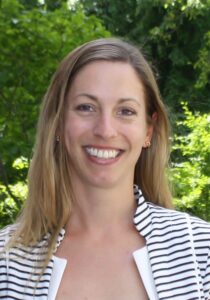
The project is being led by Civil & Mineral Engineering’s Prof. Marianne Touchie along with co-applicants John Robinson of the Munk School of Global Affairs and Public Policy and the School of the Environment, Alstan Jakubiec of The Daniels Faculty of Architecture, Landscape and Design as well as Blake Poland from the Dalla Lana School of Public Health.
Using tools to measure things like indoor air quality and temperature, as well as an app accepting real-time feedback from building inhabitants, the project aims to create a new standard for holistic building performance.
Not only will it assess environmental and economic benchmarks, but it intends to measure the impact of these retrofits on people working and living in these buildings.
Prof. Touchie took some time to tell us more about the three-year project.
What is the project all about?
We want to inform the retrofit process by trying to link specific aspects of the built environment to wellness outcomes of the people living and working in these spaces. We plan to do this through pre- and post-retrofit assessments using indoor environmental quality measurements and inhabitant feedback.
The university is investing millions and millions of dollars in energy retrofits, but while we are making that investment, the question is whether we can integrate other changes to the building that would improve the wellness of students, faculty, and staff more broadly.
What are some examples of the improvements you would make?
Potentially improving accessibility to spaces, making spaces more thermally comfortable or looking at ways in which we could provide more control to inhabitants. As many of the planned retrofits are to the building mechanical systems, I hope we will be able to provide suggestions of how we can better operate these systems to improve the quality of the indoor environment and address inhabitant concerns that come up in the pre-retrofit assessments.
How do green retrofits improve the mood and productivity of people inhabiting the buildings?
The jury is still out on that one. There are some studies suggesting green buildings create a better indoor environment, but there is also a lot of contradictory research.
This is a complex topic with many distinct aspects of the individual, the space, the building, and the broader community all impacting how the inhabitant feels. Previous research has tended to focus on thermal comfort, visual comfort, or indoor air quality independently, and what we are really trying to do is to bring all those elements together into a common framework.
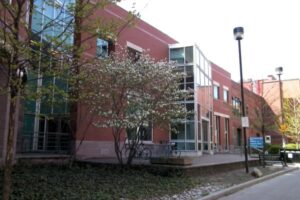
And it is not just the objective quality of the indoor environment that we are interested in, but instead seeing what impact these conditions have on the well-being of the inhabitants.
While these retrofits are designed to reduce GHG emissions to mitigate climate change and reach U of T’s climate positive by 2050 goal, through this project we are hoping to find ways to leverage these retrofits to also be “people positive” by retrofitting spaces to improve comfort, productivity, health for students, staff, and faculty.
What results are you most interested in seeing out of this project?
There are a few things I would like to see come out of this project. From a scientific perspective, I hope this project will contribute to the growing body of knowledge on how aspects of the built environment influence inhabitant wellbeing. From a methodological perspective, I hope that the assessment methods we develop through this project can be integrated into the University’s building retrofit process, both to inform what needs to be addressed through the retrofit and then to verify predicted improvements after retrofit completion to ensure we are meeting our goals related to both the climate and the campus community.
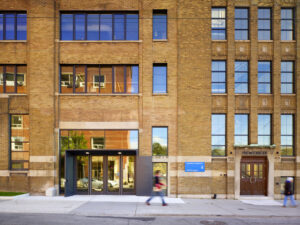
When are you expecting to begin your research?
We have already begun the planning process among the co-applicants and will be kicking off the project soon with a wonderful group of people from across the university working with us on this including Facilities and Services and representatives from the Dean’s and Vice Dean’s offices, as well as our industry partner, the International WELL Building Institute.
We plan to develop the assessment approaches this year and then begin to conduct pre-retrofit evaluations starting in early 2023.
Will people notice this research project going on across campus?
We will target spaces that are common throughout the campus so they might see us in classrooms, offices, and residences. We are also going to combine long-term measurements with inhabitant responses. So, you may see monitoring equipment in particular spaces or calls for participation in the study.
Depending on what the professors allow us to do, we would love to come in to explain the study to students and point out what sort of measurements we will be doing in the classrooms.
How can people get involved?
Keep an eye out for opportunities to participate in the study. We would also be interested in hearing from faculty or staff who know of a space in one of the planned building retrofits that impacts many people in our campus community (e.g., a large classroom or open plan office space). The initial candidate building list includes Earth Sciences and the Exam Centre with more to be identified soon.
Final thoughts?
One aspect of the study that I am really excited about is testing the large-scale use of a technique called Photovoice which we will use to prompt respondents to take photos of aspects of the campus-built environment that add to or detract from their wellbeing.
We are looking to integrate students, staff and faculty perspectives this way as it is a much richer data source than survey responses.
I am hoping we will be able to crowd source images and perspectives on features of a particular building to determine what the most important aspects are to address through retrofits.
By David Goldberg
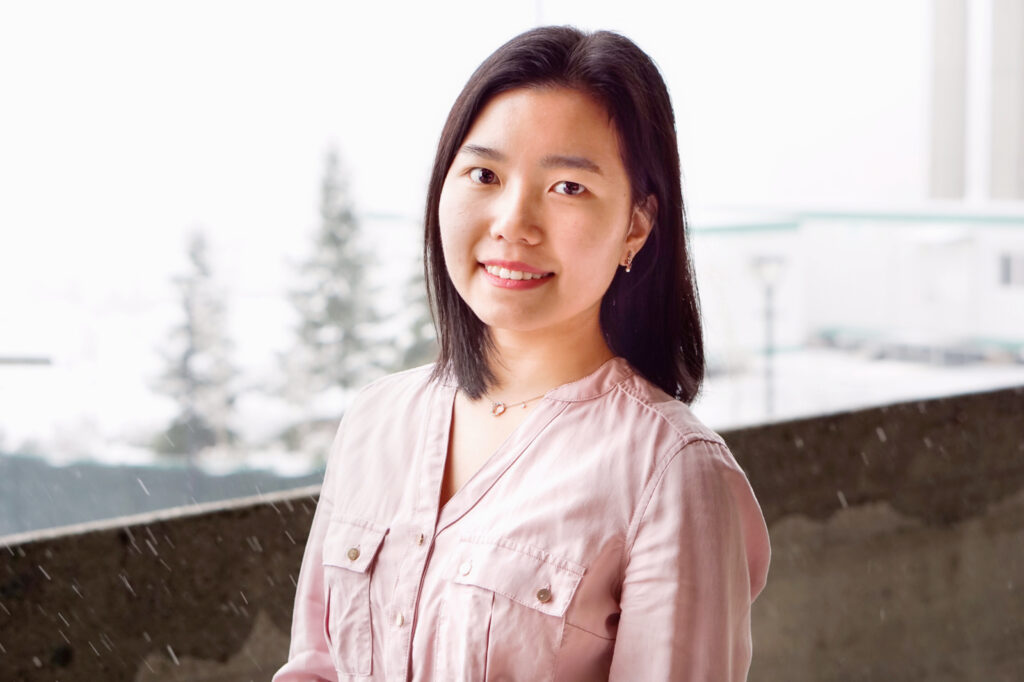
In advance of the coming Graduate Research Days, February 24 & 25, CivMin contacted previous participants to get their point of view on the event and their research goals at U of T. Our Q&A is with PhD candidate Mengqing Kan.
Can you please tell us a little about yourself?
My name is Mengqing Kan. I am from China. I got my bachelor’s degree from Simon Fraser University, majoring in sustainable business. Then I went to the University of Michigan to pursue my master’s degree in Environment and Sustainability. At U of T I am supervised by Prof. Daniel Posen and Prof. Heather MacLean. I am interested in researching carbon capture and utilization technologies. What attracted you to bring you to U of T?
I decided to come to U of T because my research interests aligned with those of my supervisors and the SPM group. Professors Posen and MacLean were recommended by my master’s supervisors, who provided me advice on PhD programs. Also, because my master’s thesis is about plastics, and Prof Posen has published multiple articles on the subject, I was familiar with Prof Posen’s work before I decided to apply for a PhD. I had an interview with them before to GRD. What kind of experience did you have with Graduate Research Days (GRD) last year?
Last year I was able to participate in GRD online. We used an internet portal to view a video tour of the labs, which was provided by several current students. We also went to other rooms to speak with professors and current students; depending on how many people were in the room at the time, it might be one-on-one or group discussions. It exceeded my expectations because I had enough time to talk to my interested professors, and existing students addressed my questions about the school and program. Had you been to Toronto, or anywhere in Canada, before?
I lived in Vancouver and studied in Simon Fraser University for four years. I have travelled around in the west coast, but I never visited Toronto before. How did you find the city when you first arrived? What made an impression?
When I first arrived, I liked the city. I find commuting by bike in downtown Toronto is incredibly convenient due to the availability of shared bikes and bike lanes. Did you already know Toronto is the most diverse (multiculturual) city in the world?
I did not know that. But I feel Toronto is a very diverse city. Especially at U of T, as many of my classmates and people in my research group came from diverse backgrounds. What kind of impression did you have of the U of T campus upon your first visit?
Because U of T St. George campus is in downtown Toronto, I found it is very convenient to subway stations, gallery, museum, shopping malls, restaurants. Do you now have a favourite place to visit on campus, or perhaps in the nearby neighbourhoods?
I like Philosopher’s walk. Philosopher’s Walk is a leafy walkway at the St George campus. It is a short distance from Trinity College. The Walk’s gorgeous natural setting makes me relax. It’s a good place to gather and walk. You started in September 2021, so now have a bit better idea of what you want to research (correct?). Can you tell us a bit more about this?
I am interested in use life cycle assessment and mathematics optimization model to investigate how do the various CCU pathways help Canada achieve net zero emissions by 2050 while maximizing economic returns. Do you have any advice for graduate students considering attending GRD this year?
I think GRD is a great opportunity to know our interested supervisors. I recommend prospective students to do some research about professor’s research area; this will help with the communication. What’s next for you in the future?
I will keep working on my research. This summer I plan to attend an academic conference. Is there anything fun/unusual hobby or talent you’d like to share with us?
I like playing table tennis and Guzheng, a traditional Chinese musical instrument.

As part of Valentine’s Day celebrations, CivMin students of the past share their love connections found while attending school. The stories involve three from CivMin and a fourth U of T student.
By Phill Snel
Daniel & Jennifer
“I came for an Iron Ring and left with a wedding ring,” recalls Daniel Alonzi (CivE 0T7). Alonzi wed fellow civil engineering student, then Jennifer Assal (CivE 0T6).
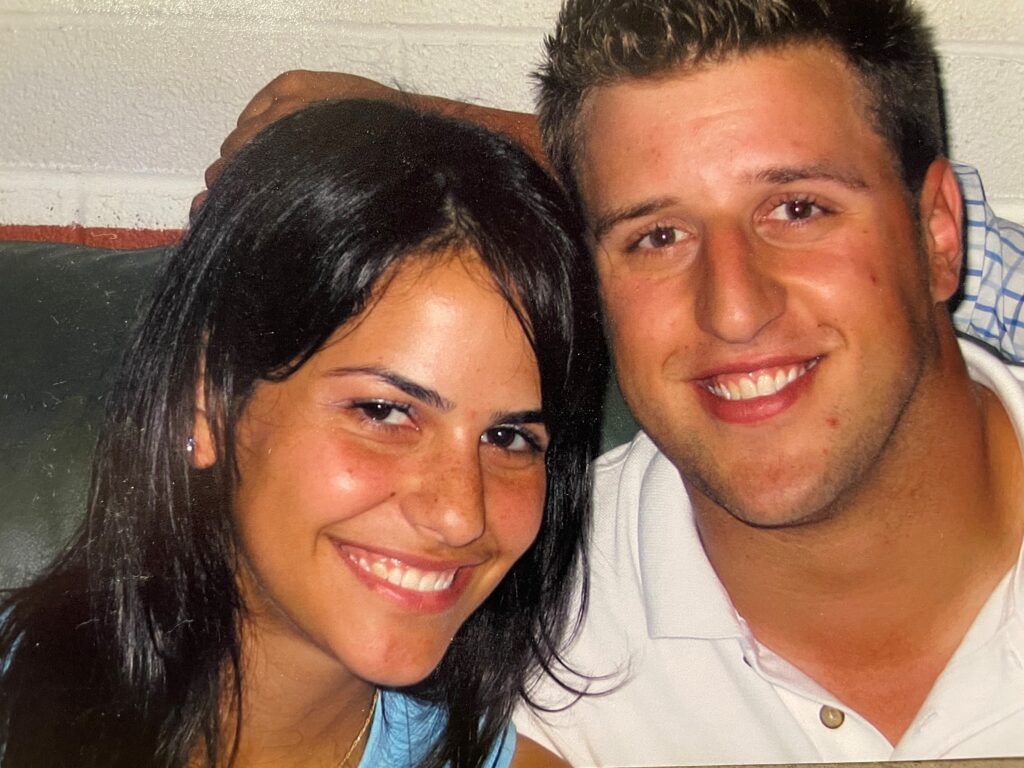
Alonzi met his future wife while attending U of T Camp on Gull Lake, near Minden, Ont., August of 2005. Jennifer Assal arrived on a Saturday with others from her year, who had all attended Camp the previous summer, in order to erect a traditional monument. The 0T6 crew had designed a brick barbecue to erect over the weekend, since everyone had employment commitments during the week.
With his work vehicle parked at Camp, a pickup filled with various tools, Alonzi found himself ‘voluntold’ to assist the group, as he appeared to have the necessary know-how to conduct some basic construction. In fact, Prof. Evan Bentz knew his credentials as the son of Fred Alonzi, founder of Bridgecon Construction Ltd., gave him hands-on experience with large construction projects. He protested, explaining to Bentz he had two hours to complete and hand in an assignment. Bentz gave him a break if he’d agree to help the upper-year group. “I then saw Jennifer and quickly agreed I should help them,” he recalls.
After a full Saturday and digging a foundation hole through roots and rocks, finding a source for aggregate in the countryside, then mixing concrete by flashlight, the group managed to pour a base late at night. The following day, Sunday, saw the laying of bricks and finalizing the structure in time to take a group photo with sunlight fading.
“Jennifer was the only who worked alongside me the whole time,” Alonzi says. “I guess it was a good test to see if we could eventually work together in the family business, eh?”
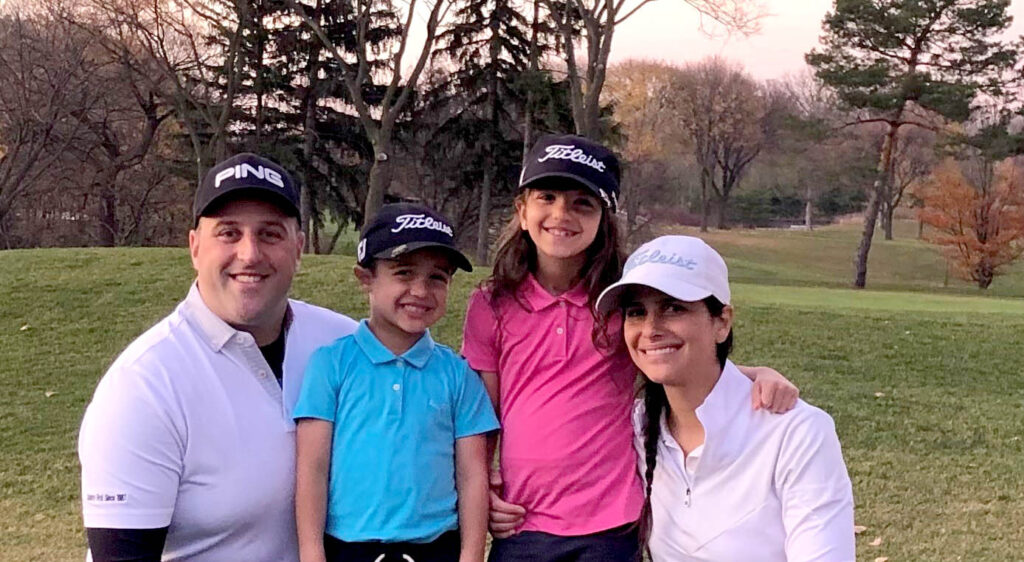
He’s quick to remark, “I know I married out of my league, so I try very hard every day to prove she made the right choice!”
Jennifer adds, “I”m the lucky one,” as Daniel has been bringing her dreams to fruition since the day they met.
Today Daniel is Vice President and Jennifer is Health & Safety and Project Manager at Bridgecon Construction. Amongst all of the things they have created together, nothing makes them prouder than their two children and future UofT Civil Engineers, Julia and Freddy.
Daniel Alonzi and Jennifer Alonzi were each recognized with an Arbor Award from U of T in 2018.
Peter and Maureen
Peter Smith, then attending U of T as a first-year civil engineering student in 1974, recalls asking a former high school colleague living in residence for an introduction, leading to meeting his future bride Maureen Finkbeiner (BScN 78).
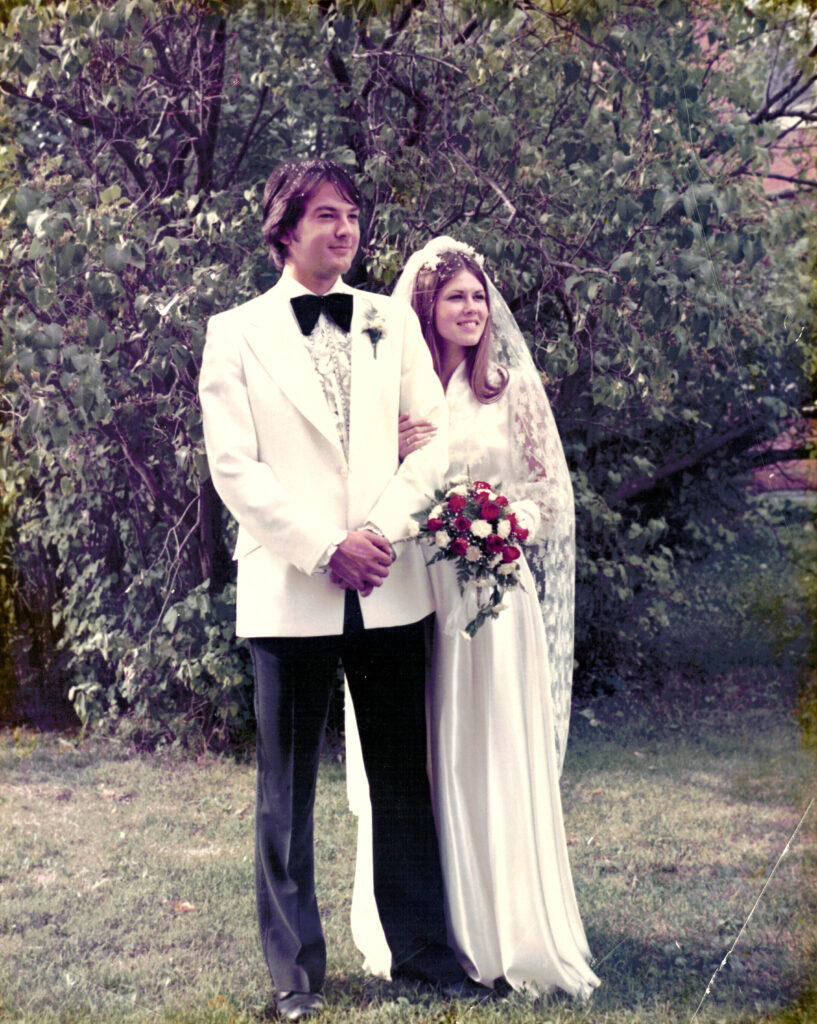
As a first-year student Smith lived in residence at New College. “There was a girls side and a boys side,” says Smith. “One day I saw a woman I went to high school with, LouAnne Mailing, talking with an incredibly beautiful woman in our cafeteria. So I asked if she knew her. It turns out to be her roommate Maureen Finkbeiner, a Nursing student, so I asked for an introduction.”
“Later in the year a friend from the football team, Gaye Westlake, saw my new girlfriend’s roommate LouAnne, thinking she was pretty, and asked me if I’d introduce him,” Smith recounts. “So I did, and ended up best man at their wedding!”
Peter and Maureen were married the August of 1975. The next year Smith also has a memory related to Camp, as he was celebrating his wedding anniversary while also lobbying instructors to be allowed the opportunity to watch the Canada Cup 76 series on television.
Smith retains his love of his time at U of T Engineering, and especially the history and traditions of places like Hart House and Gull Lake.
Maureen recalls wistfully, “At Orientation Week they warned nursing students to stay away from Engineers! Now a classic matchup and here we are, four decades later.”
Though Smith began his Engineering degree at U of T, later finishing at the University of Guelph, he retains strong connections to U of T Engineering and CivMin.
Peter Smith has strong CivMin ties and works as Chair of the Residential and Civil Construction Alliance of Ontario (RCCAO) and as Executive Director of the Heavy Construction Association of Toronto (HCAT) was featured in a story November 2020.
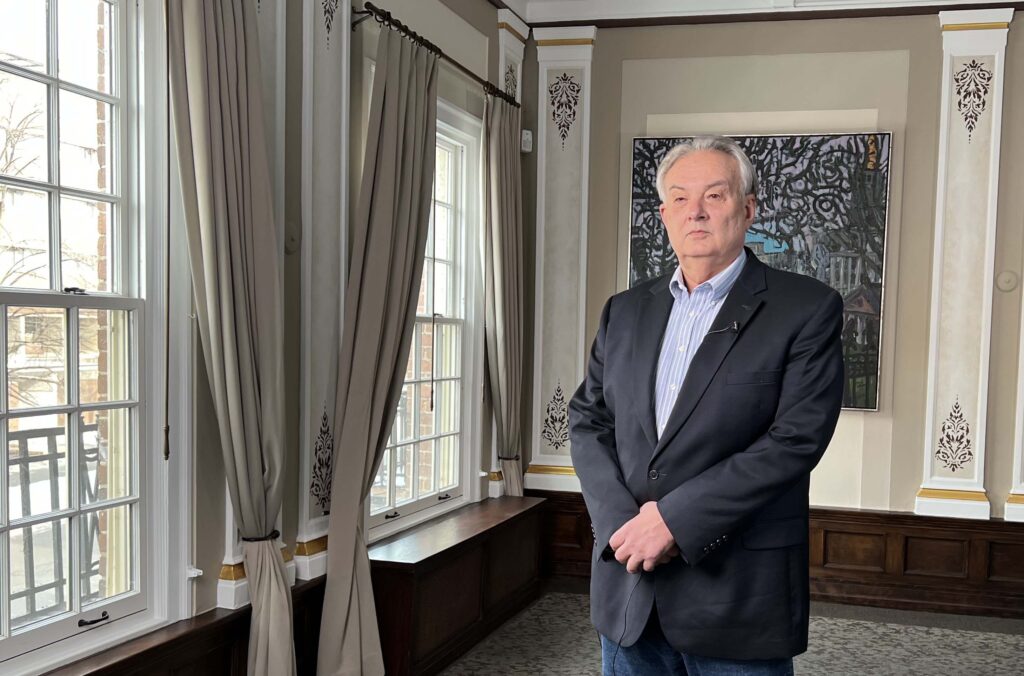
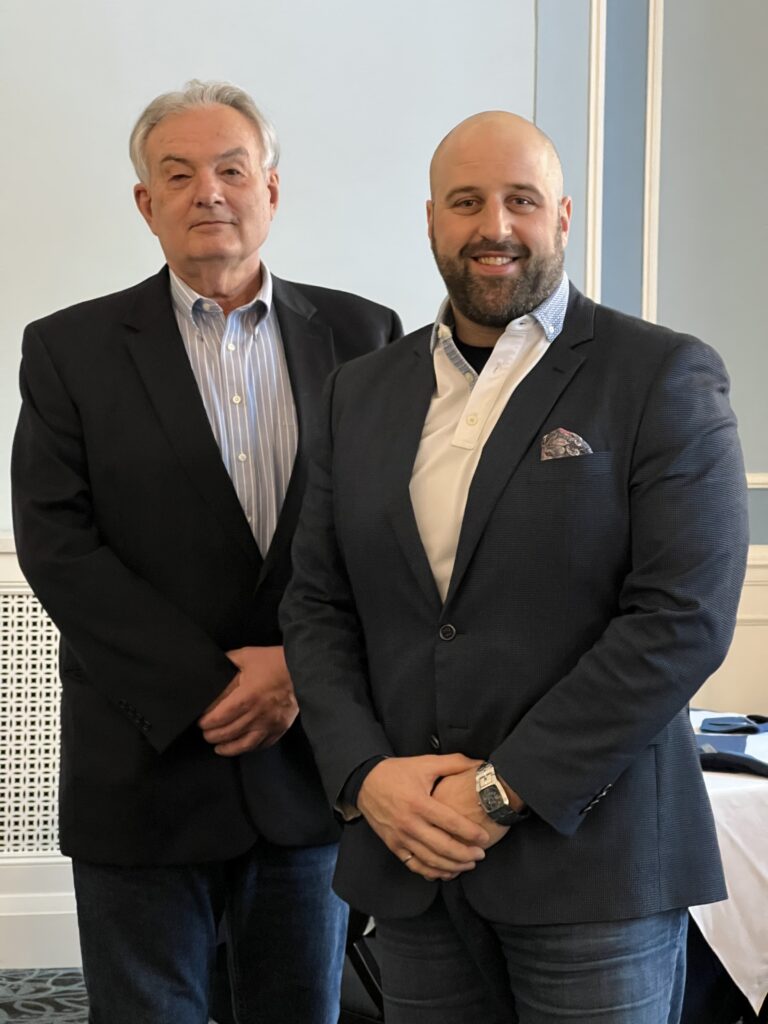
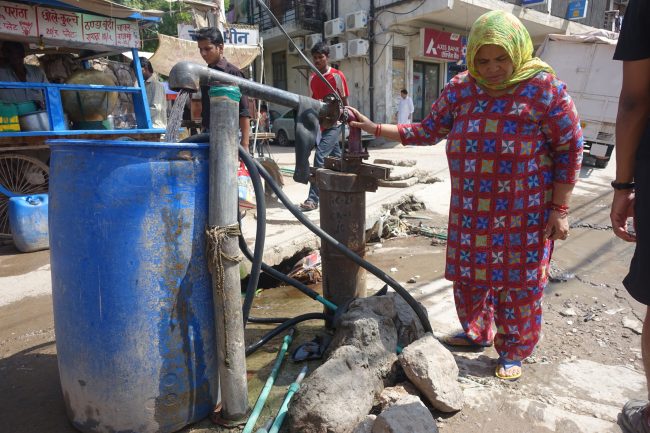
A multidisciplinary team from across the University of Toronto is developing tools and metrics to empower water planners, communities and activists, and improve water equity in India.
The project is led by Professors David Meyer (CivMin, CGEN), Nidhi Subramanyam (Geography & Planning) and Carmen Logie (Social Work). It is one of 17 to receive Research Catalyst Funding Grants through the Data Sciences Institute (DSI) at U of T.
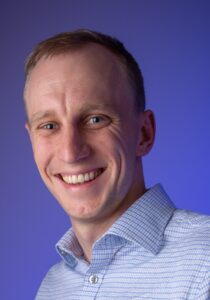
While India has made gains in expanding access to water distribution networks, rapid urbanization and inadequate infrastructure have resulted in systems that provide water for less than four hours per day in some regions, impacting 390 million people.
To cope, residents invest in water storage infrastructure and seek alternative water sources, imposing significant financial, environmental, educational, health and time costs, especially on women and girls.
“The level of complexity and inequality is staggering,” says Meyer. “Since 2018, I have been exploring options for visualizing and learning from water supply schedules.”
With their project, “Harnessing Data to Visualize and Mitigate Urban Water Inequities within the Cauvery River Basin, India,” Meyer, Subramanyam and Logie bring together diverse disciplinary perspectives on water and data — including a deep understanding of water engineering, water governance and equity.
“Water is a cross-cutting theme that flows through so many disciplines, geographies, technologies and aspects of our lives,” says Subramanyam. “Any study about water must engage different kinds of data, expertise and knowledge systems.”
“Professor Subramanyam has helped me realize that data cannot be interpreted properly without considering the data generation process and the data generators themselves,” adds Meyer. “Understanding the context and incentives for water utilities to report and curate data will prove key to leveraging it on an ongoing basis.”
All projects supported by the Catalyst Grants fund multidisciplinary research teams focused on using the development of new data science methodology or the innovative use of data science to address questions of major societal importance.
“The Data Sciences Institute is committed to fostering new opportunities to cultivate multi-disciplinary collaborations between data science methodologists and researchers in various application domains. This is just the beginning,” says Professor Timothy Chan (MIE), who is the DSI associate director of research and thematic programming.
“With this inaugural round, we received 70 highly competitive proposals, which were carefully assessed by a multidisciplinary review panel.”
The Data Sciences Institute Catalyst Grants are supported by the University of Toronto Institutional Strategic Initiatives and external funding partners, with two of the 2022 Catalyst Grants co-funded by Medicine by Design directed to finding solutions to challenges in regenerative medicine.
From U of T Engineering, the list of grant recipients also includes the following projects:
Preventing a Reproducibility Crisis in Quantum Computing: Benchmarking Quantum Computing Against Classical Algorithms for Molecular Property Predictions
- Hans-Arno Jacobsen (ECE) and Ulrich Fekl (Chemical and Physical Sciences, UTM)
Bioimage Informatics for Exploring Heterogeneous Cell Communities and Accelerating the Development of Effective Cancer Treatments (Project co-funded by Medicine by Design)
- Joshua Milstein (Chemical and Physical Sciences, UTM), Alison McGuigan (ChemE) and Rodrigo Fernandez-Gonzalez (ChemE, BME)
Predicting And Preventing Chronic Disease burden in populations (PREPARED): Deploying decision-support tools for the prevention of chronic diseases
- Laura Rosella (Dalla Lana School of Public Health), Birsen Donmez (MIE), Alfred Myrtede (MIE), Hailey Banack (Dalla Lana School of Public Health) and Greg A. Jamieson (MIE)
Reduce Early Revisions of Joint Replacements through Data Science Strategies
- Yu Zou (MSE), Qian Sun (Computer & Mathematical Sciences, UTSC) and Adele Changoor (Lunenfeld-Tanenbaum Research Institute)
By Data Sciences Group
This Story originally published by Engineering News
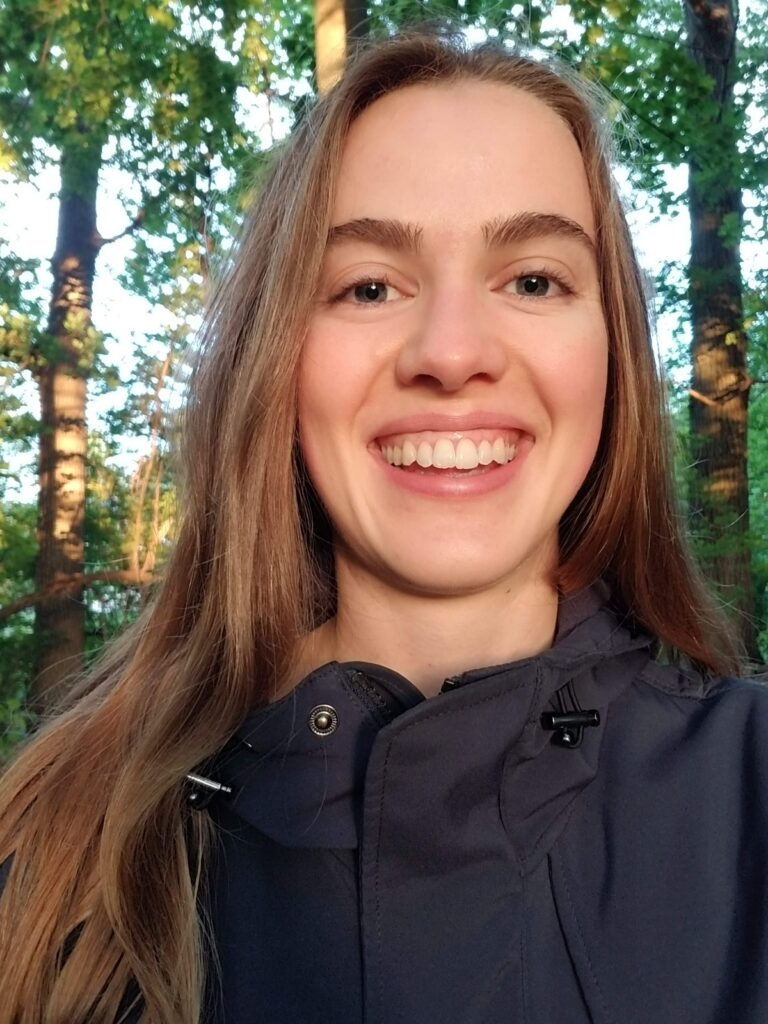
To mark the United Nations’ International Day of Women and Girls in Science on Friday, February 11 CivMin sat (virtually) with civil engineering MASc candidate Zoe Hoskin to discuss their experience exploring research options, impressions of attending U of T and living in Toronto.
Could you tell us a little about yourself, when you started in CivMin at U of T.
I started at U of T in September 2021. I’m originally from Toronto, first growing up in The Beach then in Brampton (about 40 minutes fromToronto). My undergrad was at McGill in Montreal. I’m researching indoor microbiomes, so different microbes in the built environment within buildings. Right now my topic is on studying SARS-CoV-2 RNA in indoor spaces. We’re using quantitative filter forensics to try to estimate how much SARS-CoV-2 RNA is in a given amount of air in indoor space, like a room within a house.
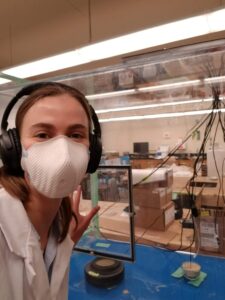
What attracted you specifically to U of T?
I really wanted to do research that had some significance for human health and/or environmental protection, and the building science research going on at U of T ties both together nicely. It’s a really fantastic opportunity to work with [co-supervisor] Professor Sarah Haines, given her expertise in the microbiology of built environments and also [co-supervisor] Professor Jeffrey Siegel with his expertise with quantitative filter forensics and beyond. I feel really lucky I have this opportunity to learn so much new stuff every week and improve my skills in a lot of different areas.
You’re originally from Toronto, moved away for your undergrad, then now moved back to Toronto, but much more centrally located. How do you like living downtown?
I like it. It’s a little bit different now, because of the pandemic, but it’s nice that it’s walkable. It’s nice being close to groceries, my friends to High Park and to campus. I can’t wait until concerts, comedy clubs, and queer events open up again–the kind of stuff that Toronto is known for.
You talked about your research area and supervisors Profs Haines and Siegel. They’ve covered a lot of ground on this topic during the pandemic, and continue to do so. Where will you be doing this research to assess these indoor environments?
We did a wave of experiments in homes of people who tested covid-positive, placing portable air cleaners in the rooms of people who were isolating, as well as in other places around the house. We then did RNA extractions and RT-qPCR on the dust on the filters of the portable air cleaners, and we finally did a filter forensics calculation to estimate the average number of copies of SARS-CoV-2 RNA present in each cubic metre of air in the room.
We’re hoping to expand this method to buildings with higher occupancies as restrictions open up.
This kind of research sounds like it would be a great benefit to the public at large. Is this sort of research being done anywhere else that you’re you know of?
Yes, Professor Siegel, and other researchers, have been doing filter forensics on other microbes and indoor air contaminants. This technique is important for schools, hospitals, social housing, and other shared indoors environments. Likewise, there’s wastewater analysis being done as a different means of environmental monitoring of the presence of SARS-CoV-2 RNA that gives data on the geographical scale of municipal areas rather than individual rooms/buildings. Professor Haines has also done research on environmental monitoring of SARS-CoV-2 using bulk dust collected from different locations/textiles within homes.
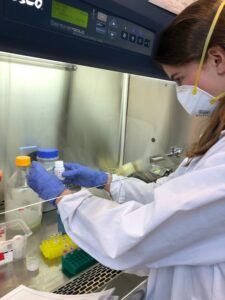
This reminds me of a now famous study from Hong Kong, known as a super-spreader event from SARS in 2003. It was a single infected person in a multi-unit building who wound up spreading the infection throughout to other not directly connected units. Could a comparison of this instance be made to your kind of research?
Yes, definitely, it’s really relevant for buildings that are attached and multi-unit buildings, especially social housing, because those types of buildings have more shared air between more occupants.
You’re still fairly new to U of T. but do you have any tips for other grad students coming into to the city, and U of T campus, for the first time?
I would say ask lots of questions at the beginning, because it’s normal to be really confused, especially in the first semester. There’s so much new stuff about being a grad student in general. In terms of Toronto, hopefully by this summer or fall there will be lots of different and interesting events, multicultural food festivals and concerts happening again.
Your ability, now during COVID protocol restrictions, to socialize with other grad students or other people is a bit restrained. You have to deliberately contact them, right? Is that what you’re finding?
Yes, I think it’s kind of like what our social life has become in general – keeping up with a few close friends, rather than meeting lots of people and hanging out in large groups.
How are you finding the workload right now, and how are you balancing?
This is my second semester and I think balancing my workload is it’s going a lot better this semester. I learned a lot through trial and error about time management during the first semester. I think it also helps to be really clear with your supervisor(s) about expectations, how long you should spend on certain tasks, research timelines, and grant application timelines. I think it’s really important to keep nurturing the other parts of your life, like friendships, hobbies, and other things that are important to you totally outside of school and work.
Do you do anything else outside of school for social life, entertainment or distraction – anything fun or unusual?
Outside of school, I like to do songwriting, play shinny, and hang out with my friends
By Phill Snel
February 2022 | Nature